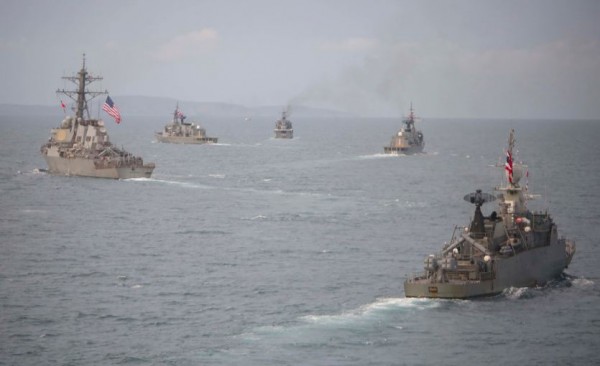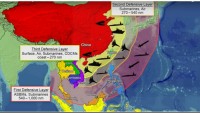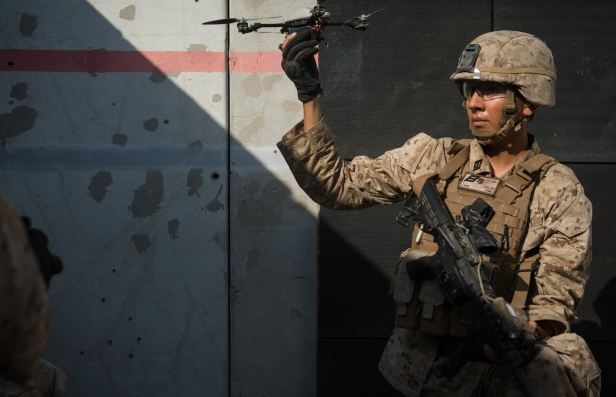Southeast Asian Nations Should Share More Military Intelligence to Thwart Foreign Threats
| Arthur Dominic Villasanta | | Oct 09, 2016 07:56 AM EDT |
(Photo : US Navy) Warships of the U.S. Navy and the Royal Thai Navy at the 22nd Annual CARAT naval exercise off Thailand.
Bilateral military relationships alone won't be enough to deter aggression against Southeast Asian countries.
What these nations need is to maintain their strong multilateral military relationships by sharing information vital to thwarting external threats to the South China Sea (read China) and other waters, said U.S. Navy Rear Admiral Donald D. Gabrielson, Commander, Logistics Group Western Pacific and Commander, Task Force 73/Singapore Area Coordinator.
Like Us on Facebook
"We can have a strong bilateral relationship with any country in this region," said Adm. Gabrielson.
"But, if we are going to really operate on these threats, we need a multilateral approach, which allows us to share information with each other."
The United States and Singapore last August co-hosted the 15th annual Southeast Asia Cooperation and Training (SEACAT) exercise, a maritime security exercise, which was also joined by Indonesia and Malaysia.
SEACAT focuses on regional cooperation to address shared maritime security challenges like smuggling, piracy and other illicit activities at sea. It brings together liaison officers (LNOs) from Singapore, Brunei, Indonesia, Malaysia, the Philippines, Thailand, Bangladesh, Cambodia, and the United States to collaborate and execute practical maritime responses to multiple realistic scenarios.
"SEACAT enables nations to work through complex maritime security challenges in a cooperative and inclusive environment," said Adm. Gabrielson.
"Sharing ideas, innovation and experience allows us to learn from each other and capture best practices to prepare for real-world contingencies."
Adm. Gabrielson said the U.S. Navy conducted multilateral training in the Sulu Sea with Malaysia and the Philippines via the Cooperation Afloat Readiness and Training (CARAT) program last June.
CARAT is a series of annual bilateral military exercises conducted by United States Pacific Fleet with several member nations of the Association of Southeast Asian Nations (ASEAN). The 22nd annual CARAT exercise was held with the Royal Thai Navy last June.
He said building a multilateral relationship requires trust.
"Trust must be present in the first place. It's an effort that requires a lot of thought and hard work."
TagsU.S. Navy, Rear Admiral Donald D. Gabrielson, Southeast Asia Cooperation and Training (SEACAT) exercise, Cooperation Afloat Readiness and Training (CARAT) program
©2015 Chinatopix All rights reserved. Do not reproduce without permission
EDITOR'S PICKS
-

Did the Trump administration just announce plans for a trade war with ‘hostile’ China and Russia?
-

US Senate passes Taiwan travel bill slammed by China
-

As Yan Sihong’s family grieves, here are other Chinese students who went missing abroad. Some have never been found
-

Beijing blasts Western critics who ‘smear China’ with the term sharp power
-

China Envoy Seeks to Defuse Tensions With U.S. as a Trade War Brews
-

Singapore's Deputy PM Provides Bitcoin Vote of Confidence Amid China's Blanket Bans
-

China warns investors over risks in overseas virtual currency trading
-

Chinese government most trustworthy: survey
-

Kashima Antlers On Course For Back-To-Back Titles
MOST POPULAR
LATEST NEWS
Zhou Yongkang: China's Former Security Chief Sentenced to Life in Prison

China's former Chief of the Ministry of Public Security, Zhou Yongkang, has been given a life sentence after he was found guilty of abusing his office, bribery and deliberately ... Full Article
TRENDING STORY

China Pork Prices Expected to Stabilize As The Supplies Recover

Elephone P9000 Smartphone is now on Sale on Amazon India

There's a Big Chance Cliffhangers Won't Still Be Resolved When Grey's Anatomy Season 13 Returns

Supreme Court Ruled on Samsung vs Apple Dispute for Patent Infringement

Microsoft Surface Pro 5 Rumors and Release Date: What is the Latest?














